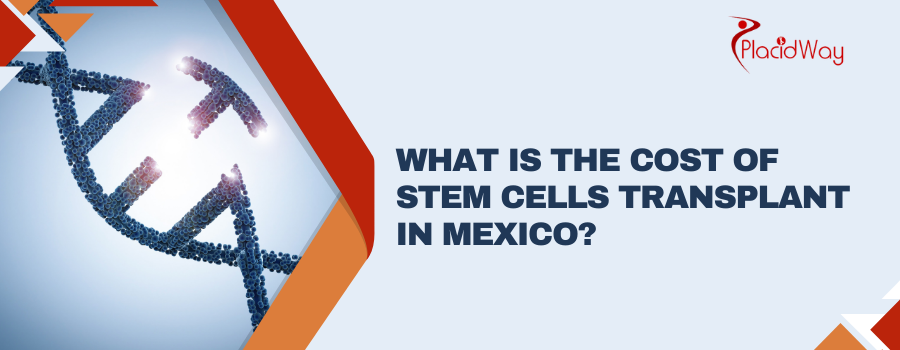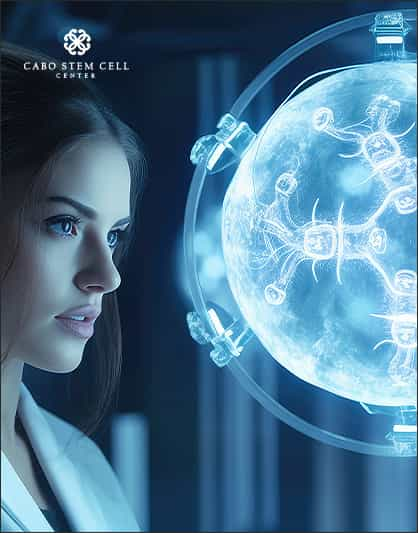Regenerative Medicine Prices in Mexico

Stem cell therapy has become a groundbreaking medical treatment for various conditions, offering patients new hope for recovery and improved quality of life. Mexico has emerged as a leading destination for affordable and advanced stem cell transplants, attracting international patients seeking effective treatments without the high costs associated with similar procedures in the U.S. and Europe.
Key Insights at a Glance
- Save Up to 70%: Affordable stem cell treatments.
- Top Clinics: Advanced medical technology.
- Expert Doctors: Globally trained specialists.
- Multiple Treatments: Over 80 conditions treated.
- All-Inclusive Deals: Treatment, stay, and travel covered.
Why Choose Mexico for Stem Cell Transplants?
Mexico's healthcare system has gained global recognition for its innovative medical procedures and patient-centered care. Here’s why Mexico is a top choice for stem cell therapy:
- Affordable Treatment: Significantly lower costs compared to the U.S. and Europe.
- Advanced Medical Facilities: Clinics equipped with the latest medical technology.
- Experienced Specialists: Internationally trained doctors and medical staff.
- Flexible Treatment Options: Personalized therapies tailored to individual needs.
- Quick and Easy Access: Proximity to the U.S. makes travel convenient for North American patients.
Cost Breakdown for Stem Cell Transplants in Mexico
Stem cell transplant costs in Mexico vary based on the type of treatment and clinic chosen. Below is an overview of typical prices:
| Type of Stem Cell Treatment | Cost in Mexico (USD) | Cost in the U.S. (USD) | Cost in Europe (USD) |
|---|---|---|---|
| Autologous Stem Cell Transplant | $15,000 - $25,000 | $45,000 - $70,000 | $50,000 - $75,000 |
| Allogeneic Stem Cell Transplant | $25,000 - $40,000 | $100,000 - $200,000 | $120,000 - $250,000 |
| Mesenchymal Stem Cell Therapy | $5,000 - $10,000 | $20,000 - $50,000 | $25,000 - $60,000 |
| Stem Cell Therapy for Neurological Disorders | $12,000 - $20,000 | $50,000 - $90,000 | $60,000 - $100,000 |
| Stem Cell Therapy for Orthopedic Conditions | $6,000 - $12,000 | $25,000 - $45,000 | $30,000 - $50,000 |
Note: Prices may vary based on clinic reputation, treatment complexity, and additional services.
Did You Know?
Stem cell therapy can treat over 80 medical conditions, including neurological disorders, autoimmune diseases, and orthopedic injuries.
Factors Affecting the Cost of Stem Cell Therapy in Mexico
Several factors influence the cost of stem cell therapy in Mexico:
- Type of Stem Cells Used: Autologous (from the patient) vs. Allogeneic (from a donor).
- Treatment Complexity: More severe or complex conditions may require more intensive treatment.
- Clinic Reputation: Well-known clinics with advanced technology may charge more.
- Additional Therapies: Complementary treatments and follow-up care may impact overall costs.
Popular Clinics for Stem Cell Therapy in Mexico
Mexico is home to several highly reputable clinics offering stem cell treatments, including:
- MexStem Cells Clinic – Focuses on neurological and orthopedic conditions.
- Dr. Omar Gonzalez Integra Medical Center – Known for pioneering stem cell therapies for chronic and degenerative diseases.
- Stem Health – Offers cutting-edge stem cell treatments for orthopedic and neurological disorders.
- SportMed – Specializes in sports injury recovery and orthopedic stem cell therapies.
Did You Know?
Many Mexican clinics offer all-inclusive packages that cover treatment, accommodation, and transportation for international patients.
Conditions Treated with Stem Cell Therapy in Mexico
Stem cell therapy in Mexico addresses a wide range of conditions, including:
- Neurological Disorders: Parkinson's disease, multiple sclerosis, spinal cord injuries.
- Autoimmune Diseases: Lupus, rheumatoid arthritis, Crohn's disease.
- Orthopedic Conditions: Osteoarthritis, joint injuries, and back pain.
- Diabetes: Type 1 and Type 2 diabetes management.
- Heart Diseases: Heart failure and coronary artery disease.
Frequently Asked Questions (FAQs)
Is Stem Cell Therapy Legal in Mexico?
Yes, stem cell therapy is legal in Mexico and is regulated by health authorities to ensure safe and ethical treatment practices. Many clinics follow international medical standards.
How Safe is Stem Cell Therapy in Mexico?
Stem cell therapy in Mexico is generally safe when performed by certified and experienced professionals. Clinics use advanced technology and adhere to strict safety protocols.
What Types of Stem Cells are Used in Mexico?
Clinics in Mexico commonly use:
- Autologous Stem Cells: Derived from the patient's own body.
- Allogeneic Stem Cells: Donor-derived stem cells.
- Mesenchymal Stem Cells (MSCs): Sourced from umbilical cord tissue, bone marrow, or adipose tissue.
How Long Does the Treatment Process Take?
The treatment duration varies depending on the condition but generally lasts between 3 to 7 days, including consultations, preparation, and the procedure.
Is There a Waiting List for Treatment?
Most clinics in Mexico offer minimal waiting times, allowing international patients to start treatment shortly after booking.
Are the Results of Stem Cell Therapy Permanent?
Results vary by individual and condition. Some patients experience long-term relief, while others may require additional treatments for sustained results.
Ready to Experience Advanced Stem Cell Treatment? Contact PlacidWay Today!
Looking for safe, effective, and affordable stem cell treatments in Mexico? PlacidWay connects you with top-rated clinics offering world-class care.
Why Choose PlacidWay?
- Access to certified, experienced medical professionals.
- Customized treatment plans tailored to your needs.
- Assistance with travel, accommodation, and logistics.
- Ongoing support before, during, and after treatment.
Take the first step toward better health today!
Contact PlacidWay Now and start your journey to recovery with advanced stem cell treatments in Mexico!


.png)
.png)
.jpg)

.png)
.png)


.png)



